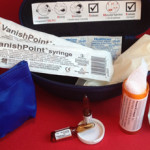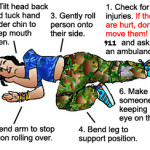This Saturday is International Overdose Awareness Day – to mark the day we are sharing a Greater Victoria harm reduction initiative spearheaded by AIDS Vancouver Island (AVI) to prevent deaths among people who use illicit drugs.
There seems to have been a spike in the number of overdose deaths in our community in the last year, hitting the street-community hard. To combat these needless deaths, AVI is providing training workshops to learn how to spot the signs of an overdose and how to respond. Using a Naloxone kit, participants can save the life of the individual overdosing, offering hope to people who use drugs and the people who care about them. Workshops have already taken place and a number of kits have been distributed to people who use illicit drugs (the people most likely to be ‘on the spot’ when an overdose occurs).
About Naloxone
Naloxone (better known by the brand name Narcan) is an opioid antagonist that works to reverse the respiratory depression that occurs when someone is overdosing on opioids (such as heroin, morphine, dilaudid, methadone). It has been used in emergency settings for over 40 years in Canada and the BC ambulance service administered naloxone 2,367 times in 2011. Due to it’s effectiveness there are hundreds of Take-Home Naloxone programs around the world, including programs in the US and Canada. These programs work to increase the availability of naloxone to individuals who are at higher risk for opioid overdose. AIDS Vancouver Island (AVI) is participating in a province-wide Take-Home Naloxone project initiated last year by the BC Centre for Disease Control (BCCDC).
About the program
- Naloxone Kit
- Recovery Position (taught in the AVI workshops)
One of the many benefits of having a Take-Home Naloxone program in our community is that we have the opportunity to use this harm reduction tool as a catalyst to increase overdose awareness, prevention and response. At the heart of the program are the overdose workshops offered to participants that include learning about how to prevent overdose, what an overdose is and looks like, and how to respond to overdose including the use of naloxone. Graduates of the training who are also currently using opioids are eligible for a naloxone prescription which they can use to obtain a take-home naloxone kit free-of-charge. Naloxone is not a controlled substance, does not produce a ‘high’ (is not addictive), and according to research, does not increase risk-taking behaviour, but does currently require a prescription in Canada.
More information about International Overdose Awareness Day
*Thank you to Heather at AVI, who provided the content for this blog post.*


